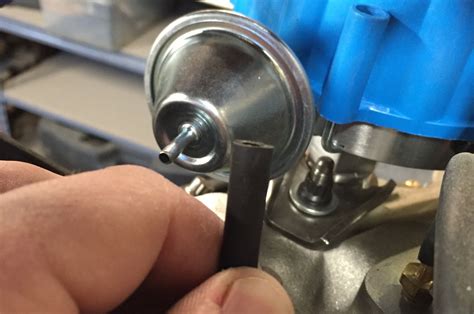Simple Steps to a More Powerful Engine: Vacuum Advance
For those seeking to squeeze every ounce of performance from their engine, understanding and optimizing the vacuum advance system is crucial. This often-overlooked component plays a significant role in engine efficiency and power output. While modern engines often utilize more sophisticated electronic timing control, many classic and modified vehicles still rely on the trusty vacuum advance mechanism. This article will delve into the mechanics, benefits, and troubleshooting of vacuum advance, providing simple steps to unlock your engine's full potential.
What is Vacuum Advance?
Vacuum advance is a system that adjusts the ignition timing based on engine vacuum. Higher vacuum, typically at lower engine speeds and lighter loads, results in less spark advance. Conversely, lower vacuum at higher engine speeds and heavier loads, signals the need for more spark advance to optimize combustion and power. This dynamic adjustment ensures optimal timing across the engine's operating range. The system uses engine vacuum to operate a diaphragm within a distributor, mechanically rotating the distributor plate and thus altering the ignition timing.
How Does Vacuum Advance Improve Engine Performance?
The benefits of a properly functioning vacuum advance system are numerous:
- Increased Low-End Torque: At lower RPMs, the increased vacuum allows for optimized combustion, resulting in improved low-end torque and smoother acceleration from idle.
- Improved Fuel Efficiency: By accurately timing the spark, the engine burns fuel more completely, maximizing efficiency and reducing fuel consumption.
- Increased Horsepower: While not as dramatic as other performance modifications, a correctly functioning vacuum advance contributes to an overall horsepower increase, particularly in the mid-range RPMs.
- Reduced Emissions: Efficient combustion directly translates to cleaner exhaust emissions, reducing harmful pollutants.
How Does Vacuum Advance Work?
The system is relatively straightforward:
- Engine Vacuum: As the engine operates, it creates vacuum in the intake manifold.
- Vacuum Diaphragm: This vacuum is routed to a diaphragm in the distributor. The diaphragm is connected to a mechanical linkage.
- Distributor Rotation: Changes in engine vacuum cause the diaphragm to flex, moving the linkage and rotating the distributor plate.
- Ignition Timing Adjustment: This rotation alters the timing of the spark, advancing or retarding it based on engine load and speed.
Troubleshooting Common Vacuum Advance Problems:
H2: My Car is Running Poorly – Could it be the Vacuum Advance?
Yes, a malfunctioning vacuum advance can lead to a range of problems, including poor acceleration, rough idling, pinging (detonation), reduced fuel economy, and difficulty starting.
H2: How Can I Test My Vacuum Advance?
A simple test involves disconnecting the vacuum line from the distributor and observing engine behavior. If the engine runs noticeably worse after disconnecting, the vacuum advance is likely functioning correctly. Conversely, if there is little to no change, the system may be faulty. However, a more thorough testing process might involve using a timing light and a vacuum gauge to accurately assess timing changes across different RPM and load conditions.
H2: What are the Common Causes of Vacuum Advance Failure?
Common causes of failure include:
- Leaking Diaphragm: A cracked or torn diaphragm will prevent proper vacuum application.
- Clogged Vacuum Lines: Restricted vacuum lines will impede the flow of vacuum to the distributor.
- Mechanical Issues: Wear and tear on the internal components of the distributor can hinder proper mechanical operation.
- Incorrect Adjustment: The vacuum advance may be incorrectly adjusted, resulting in suboptimal timing.
H2: How Can I Repair or Replace a Faulty Vacuum Advance?
Repairing a vacuum advance often involves replacing the diaphragm. This can be done relatively easily, but requires some mechanical aptitude. If the problem is due to worn internal components or a faulty distributor, replacement of the entire distributor may be necessary. In either case, consult a service manual for your specific vehicle to ensure proper repair or replacement procedure.
Conclusion:
Optimizing your vehicle's vacuum advance system is a relatively simple yet effective way to improve engine performance and efficiency. By understanding its function, troubleshooting potential problems, and performing necessary repairs or replacements, you can unlock significant gains in power, fuel economy, and overall driving experience. Remember to always consult your vehicle's service manual for specific instructions and procedures.

